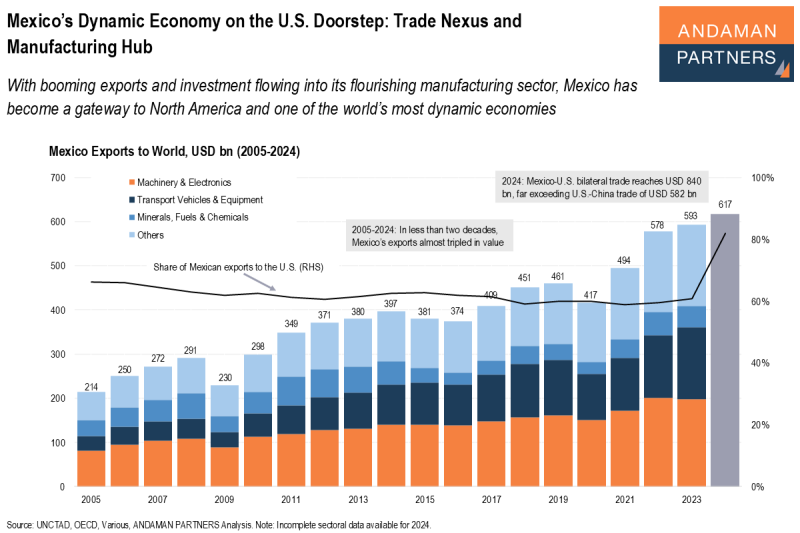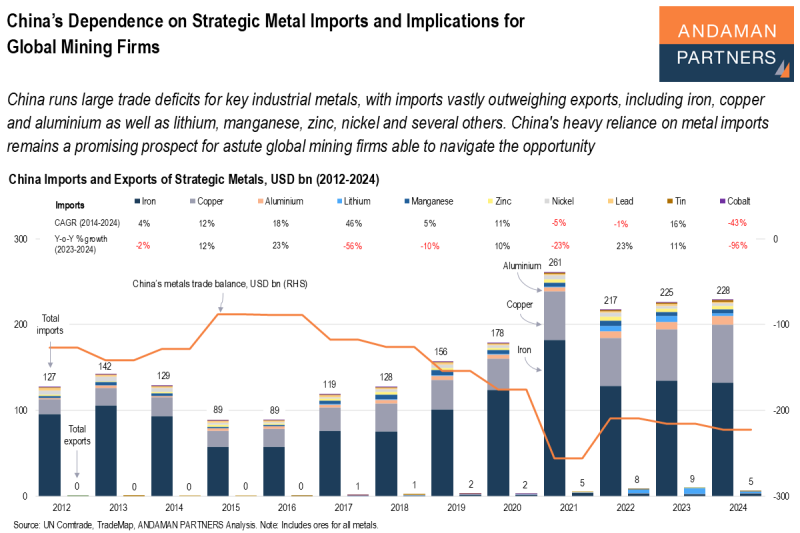Asia has more than half of the world’s people but less than a third of its GDP, underscoring the region’s vast economic potential. Unlocking Asia’s potential is today’s critical strategic business frontier.

A regional comparison of world population and GDP in 2024 reveals some distinctive features:
- Asia accounts for 54% of the world’s population, yet only 31% of its GDP. Only ten Asian countries/regions account for half the world’s population, but only 29% of the world’s GDP.
- India and Mainland China combined represent more than a third of humanity; in terms of GDP, the two countries account for only 20.5%, with Mainland China contributing 17%.
- Conversely, Europe has 9% of the world’s population and North America has less than 5%, but they account for 24.5% and 30.2% of the world’s GDP, respectively.
By looking back to 2000 and projecting into the future beyond 2024, we can observe some clear historical trends that are of vital importance to companies and investors operating in the world of today:
- From 2000 to 2024, Asia’s share of the world’s population decreased slightly from 57.2% to 54.3%, due primarily to declining population growth in several Asian countries (e.g., China, South Korea, Japan). Africa (13% to 18.8%) and the Middle East (2.4% to 6.2%) were the only regions whose share of the world’s population increased significantly.
- From 2000 to 2024, Asia’s share of the world’s GDP increased from 25.4% to 30.8%, the only region whose share increased significantly. Both Africa and the Middle East’s share of world GDP increased by only 0.4% to 2.5% and 3.2%, respectively, while the share of Europe, North America and Latin America all declined.
- From the current vantage point, if faster-than-global growth persists for the next few decades in large Asian economies (e.g., India, Indonesia, ASEAN) and the region’s population growth continues to decline, Asia’s share of the world’s GDP could catch up with its share of the world’s population by around 2055-2065.
The Asian Century (and Opportunity)
The coming equalisation of Asia’s share of the world population and GDP will be a profound global development with immense implications for the world economy. Over the next few decades, economic power will be massively redistributed to Asia, the world’s most dynamic region, radically transforming trade routes, capital flows, markets and political influence.
Unlocking Asia’s potential is today’s critical strategic business frontier, and it is imperative to shift capital investments to Asia and build deeper trade relationships in the region. Investors and companies worldwide must confront the reality that the global economy is gradually but inexorably shifting towards Asia and take the appropriate actions to turn this reality into a business opportunity.
ANDAMAN PARTNERS supports international business ventures and growth. We help launch global initiatives and accelerate successful expansion across borders. If your business, operations or project requires cross-border support, contact connect@andamanpartners.com.

ANDAMAN PARTNERS Wishes You a Merry Christmas and Happy New Year!
Merry Christmas and Happy New Year from ANDAMAN PARTNERS!

AAMEG Sundowner Event in Cape Town Ahead of Mining Indaba 2026
ANDAMAN PARTNERS is pleased to sponsor and support the AAMEG Pre-Indaba Cocktail.
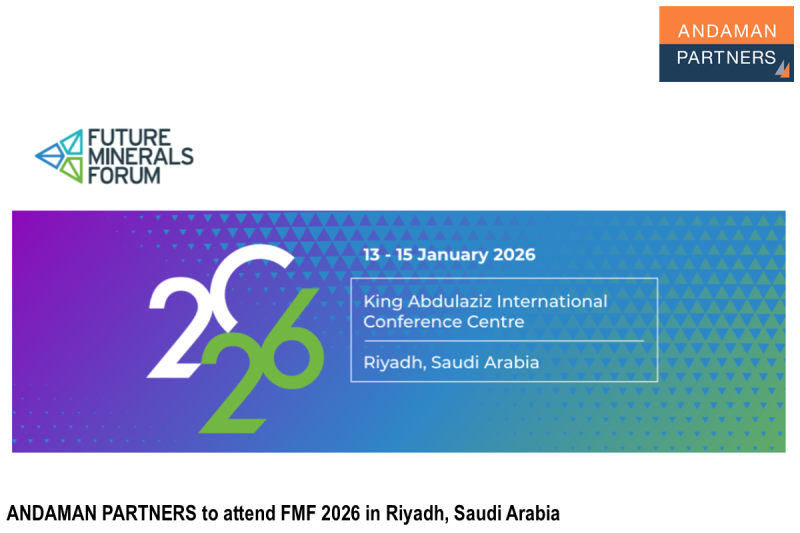
ANDAMAN PARTNERS to Attend Future Minerals Forum 2026 in Riyadh, Saudi Arabia
ANDAMAN PARTNERS Co-Founders Kobus van der Wath and Rachel Wu will attend the Future Minerals Forum (FMF) in Riyadh, Saudi Arabia.
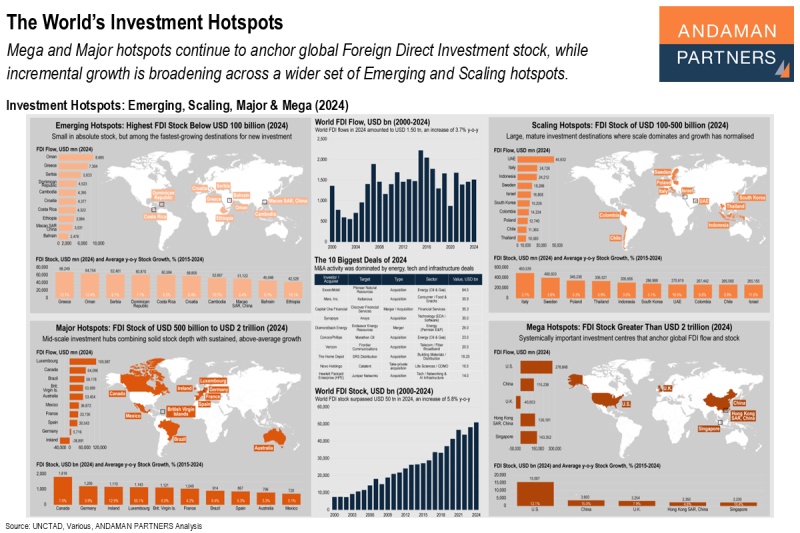
The World’s Investment Hotspots
ANDAMAN PARTNERS presents the world’s investment hotspots in four clusters: Mega, Major, Scaling and Emerging.

Zijin Mining: China’s Flagship Global Metals Firm
Rapid growth, astute deal-making and a widening footprint across strategic metals have transformed Zijin into a diversified, global mining firm.
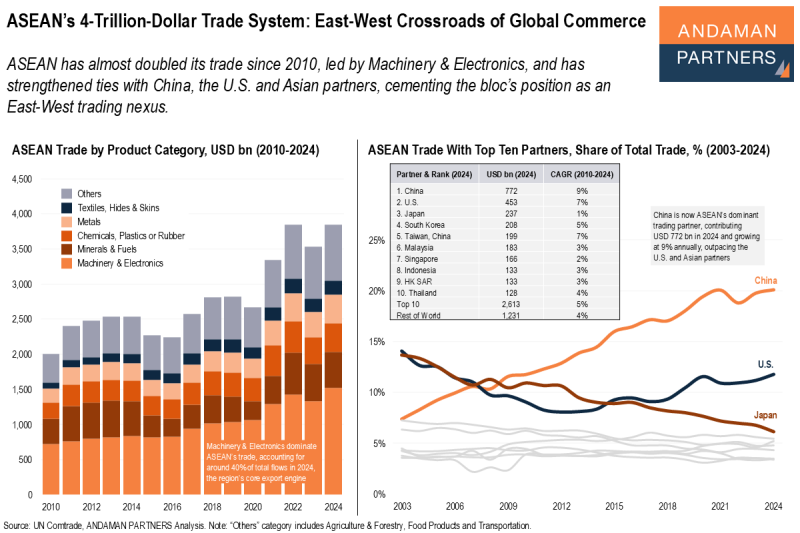
ASEAN’s 4-Trillion-Dollar Trade System: East-West Crossroads of Global Commerce
ASEAN has almost doubled its trade since 2010 and has strengthened ties with China and the U.S., cementing the bloc’s position as an East-West trading nexus.


